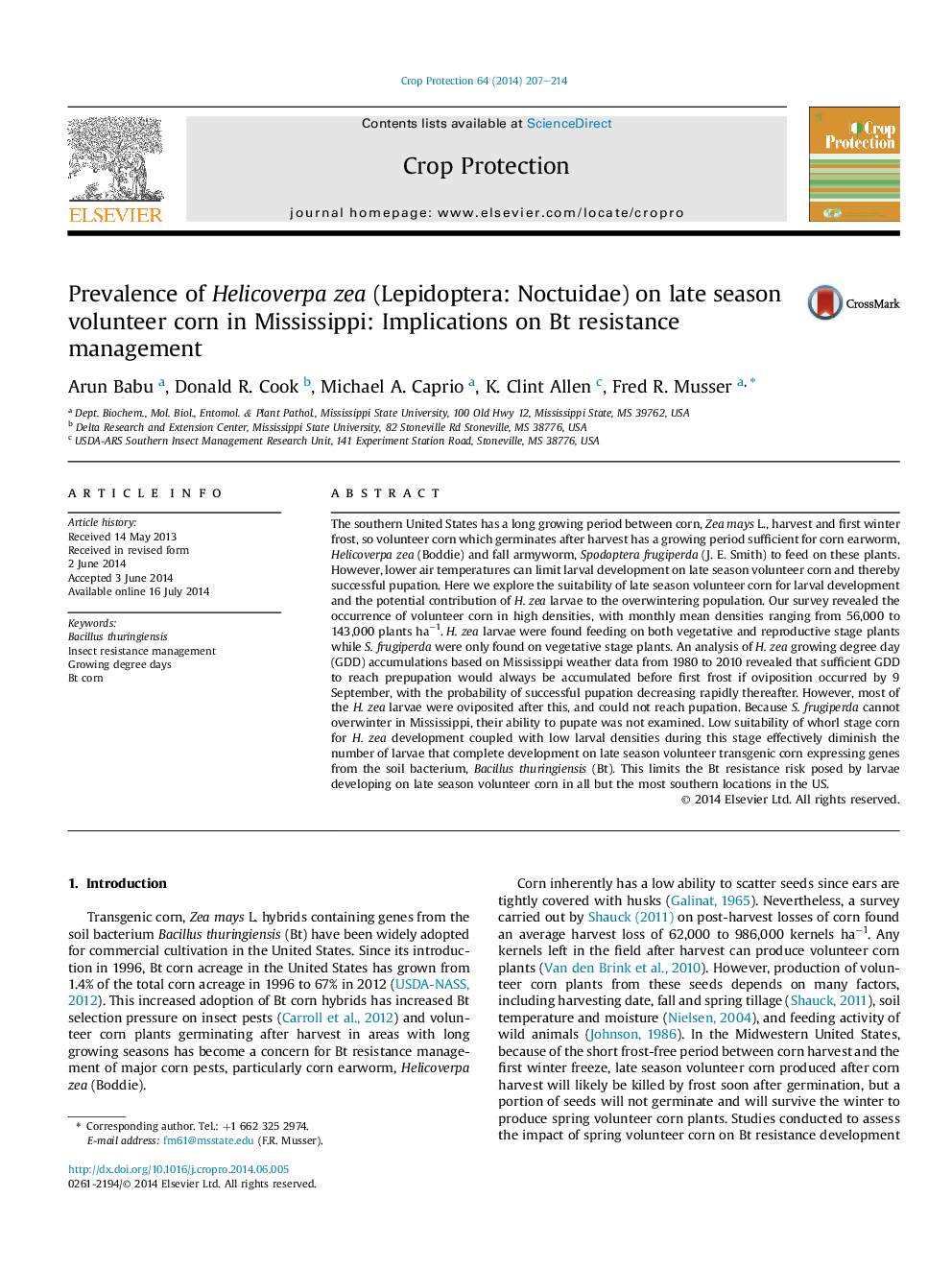| کد مقاله | کد نشریه | سال انتشار | مقاله انگلیسی | نسخه تمام متن |
|---|---|---|---|---|
| 6373681 | 1624323 | 2014 | 8 صفحه PDF | دانلود رایگان |
عنوان انگلیسی مقاله ISI
Prevalence of Helicoverpa zea (Lepidoptera: Noctuidae) on late season volunteer corn in Mississippi: Implications on Bt resistance management
دانلود مقاله + سفارش ترجمه
دانلود مقاله ISI انگلیسی
رایگان برای ایرانیان
کلمات کلیدی
موضوعات مرتبط
علوم زیستی و بیوفناوری
علوم کشاورزی و بیولوژیک
علوم زراعت و اصلاح نباتات
پیش نمایش صفحه اول مقاله

چکیده انگلیسی
The southern United States has a long growing period between corn, Zea mays L., harvest and first winter frost, so volunteer corn which germinates after harvest has a growing period sufficient for corn earworm, Helicoverpa zea (Boddie) and fall armyworm, Spodoptera frugiperda (J. E. Smith) to feed on these plants. However, lower air temperatures can limit larval development on late season volunteer corn and thereby successful pupation. Here we explore the suitability of late season volunteer corn for larval development and the potential contribution of H. zea larvae to the overwintering population. Our survey revealed the occurrence of volunteer corn in high densities, with monthly mean densities ranging from 56,000 to 143,000 plants haâ1. H. zea larvae were found feeding on both vegetative and reproductive stage plants while S. frugiperda were only found on vegetative stage plants. An analysis of H. zea growing degree day (GDD) accumulations based on Mississippi weather data from 1980 to 2010 revealed that sufficient GDD to reach prepupation would always be accumulated before first frost if oviposition occurred by 9 September, with the probability of successful pupation decreasing rapidly thereafter. However, most of the H. zea larvae were oviposited after this, and could not reach pupation. Because S. frugiperda cannot overwinter in Mississippi, their ability to pupate was not examined. Low suitability of whorl stage corn for H. zea development coupled with low larval densities during this stage effectively diminish the number of larvae that complete development on late season volunteer transgenic corn expressing genes from the soil bacterium, Bacillus thuringiensis (Bt). This limits the Bt resistance risk posed by larvae developing on late season volunteer corn in all but the most southern locations in the US.
ناشر
Database: Elsevier - ScienceDirect (ساینس دایرکت)
Journal: Crop Protection - Volume 64, October 2014, Pages 207-214
Journal: Crop Protection - Volume 64, October 2014, Pages 207-214
نویسندگان
Arun Babu, Donald R. Cook, Michael A. Caprio, K. Clint Allen, Fred R. Musser,